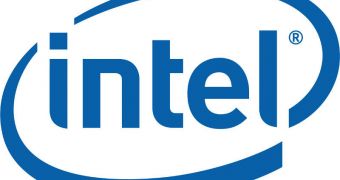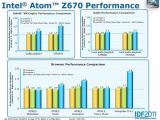Intel is trying as hard as it can to promote its Atom processors for tablet use, and recently the Santa Clara chip giant unveiled a series of benchmark that compare its single-core Z670 CPU with a dual-core ARM-based SoC, the Intel chip proving to be faster than its counterpart in all tests run.
Both chips were running the 3.1 version of the Android mobile operating system, also known as Honeycomb, and the ARM powered tablet was based on an Nvidia Tegra 250 SoC, which relies on two 1GHz Cortex A9 cores.
From the benchmarks provided by Intel, the Atom processor was faster in almost all the scenarios that were run.
The biggest difference between the two solutions was recorded in the SunSpider JavaScript benchmark (a test designed to find out the JavaScript performance of the system), where the Intel CPU managed to lead the ARM-based chip by 70 to 80 percent.
The Intel Atom Z670 processor is part of the Oak Trail platform which was designed especially to be used inside slates and other low-power devices.
The chip features a single computing core running at a frequency of 1.5GHz, 512KB of L2 cache memory as well as a GMA 600 integrated graphics unit that supports OpenGL ES 2.0, OpenGL 2.1 and OpenVG 1.1.
This is actually a rebranded PowerVR SGX 535 GPU that is built using the 45nm fabrication process and run at a higher-than-average frequency.
Other features include an on-board 32-bit LPDDR1/DDR2 memory controller and video encode/decode logic which adds hardware acceleration for MPEG-2, VC-1 and AVC video streams. The TDP of the Oak Trail chips is rated at a mere 3W.
Intel has recently announced at IDF that all future versions of Android will be optimized for x86 chips, but until that happens the market will probably move towards faster ARM system-on-a-chip designs like the Nvidia Kal-El processor. (via HardwareLuxx)

 14 DAY TRIAL //
14 DAY TRIAL // 
